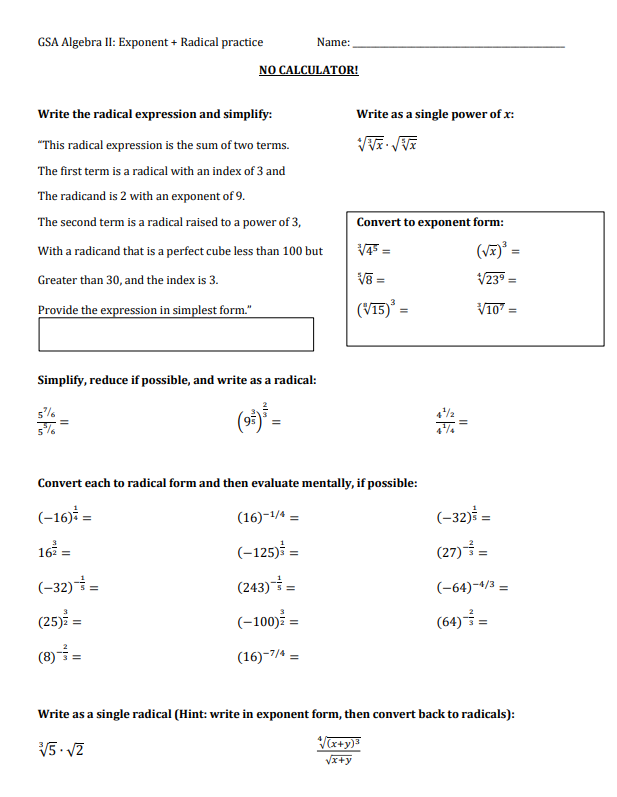Find Your Radical Error
A couple weeks ago, I gave my students a worksheet on things related to radicals: evaluating radicals mentally, converting from exponent to radical form, considering whether there is one, two, or no solution, and more. I created this worksheet based on a problem set my brother got in his Algebra II class years ago. I really liked it, so I used some of the same problems and added more. Here it is in PDF FORM and images below:
I always forget how long this worksheet takes my sophomores to complete. I budgeted about 30 minutes when lesson planning, but they ended up needing a second period. Since they never all finish their work at the same time, I had an MCAS geometry review packet ready to go for those who were done earlier.
For this classwork, I decided to collect the worksheet and grade it on accuracy. Typically I grade on completion for practice like this, but since I gave them plenty of time, circulated the room the entire time giving feedback, and felt they had enough background knowledge to get these problems correct, I took a point off for every 6 errors (or half a point off for every 3 errors).
As I went through the sheets over April vacation, I noticed a LOT of common errors; errors that I knew they shouldn’t be making. It could be due to carelessness or rushing in some cases, but either way I wanted an effective way to address the errors. I didn’t want to just hand back the worksheets and have them correct them, since that would leave some students with almost nothing to do, and other with too much to do. I decided to create a “Fix the Error” worksheet based directly on the errors I saw. As I graded them in the car (we went on a road trip over vacation), I jotted down my ideas for problems on a scrap piece of paper. This was my brainstorming process:
I switched some of the problems up for variety’s sake, but did keep some the same. I also added on some more problems at the end based on common errors I was seeing when looking at their test on polynomials, which I also graded over April break. PDF version HERE.
I was really happy with how this worksheet came out. I told them that MOST of the statements had an error, but not all. This added an extra element of having to decide whether there was even anything to fix (only one of the statements had no error).
Like the first worksheet, completing this in class took longer than expected - all three of my classes needed 50 minutes to get through it. I was happy to see that this problem set really got the groups talking and debating over whether there was an error and if so, how to fix it. It was also a great refresher right after April break of all the radical information we had done before break.
In order to go over the answers efficiently and thoroughly, and also to ensure they were motivated to fully finish each problem, I told them when they began that I would be giving each of them a random problem to do at the vertical whiteboards for comparison. At the end of the 50 minutes, I ran around and gave each of them a popsicle stick with a number between 1 and 24 on it. I wrote the numbers 1 through 24 on the vertical whiteboards around the room and had everyone go to their spot at the same time to write their answer. This allowed them to scan the room quickly to compare and check their work.






